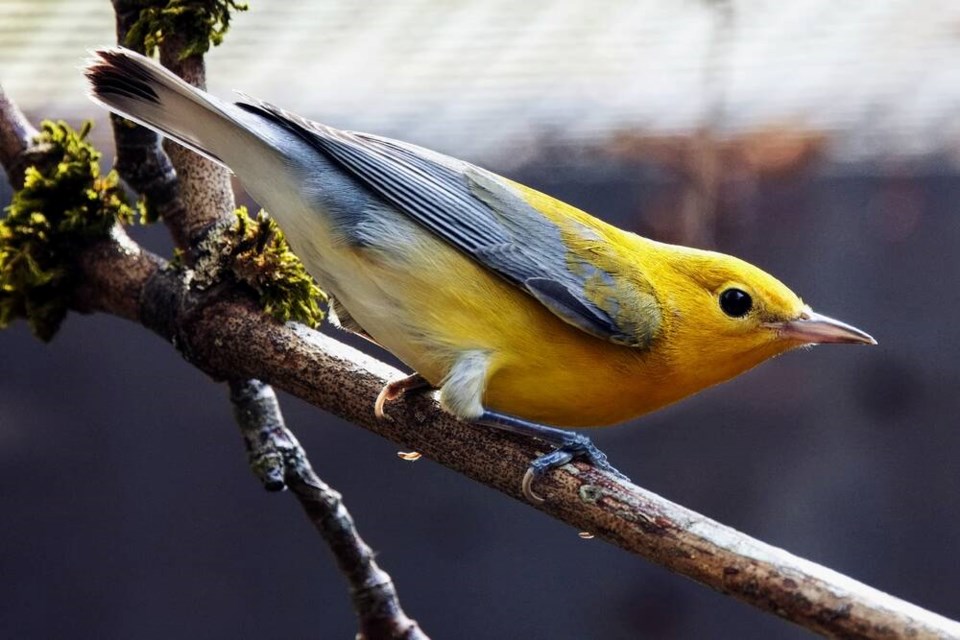A rare yellow warbler in December 2022 should have been southbound — in the Gulf of Mexico — during the winter months.
But instead, it likely lost its way and landed in the gentle hands of the Wildlife Rescue Association of BC (WRA) in Burnaby for care.
The tiny yellow prothonotary warbler, classified as an endangered species is a rare sighting in our region, WRA hospital manager Kimberly Stephens said.
The birds are more common in central and eastern parts of Canada — mainly in Ontario, she noted. Due to the freezing winters in Canada, the birds generally migrate to warmer climates near the Gulf of Mexico in search of food, resources, and other factors in late fall; they migrate back to Eastern Canada in spring.
Although details of how the bird ended up in South Â鶹´«Ã½Ó³»are unknown, Stephens noted that the little bird was in need of good care, having been brought in to the facility in Burnaby without incident and out of concern for its health.
On Dec. 6, 2022, Wildlife Rescue’s expert team rescued the warbler and cared for it until last week. She was in care and observation for 153 days, Stephens said. “She was cold, lethargic, depressed — all likely due to the cold weather,” she added.
So the caregivers gave her food and simulated an indoor environment, mimicking the climatic conditions in Mexico where she would’ve been.
After five months of care, the Wildlife Rescue Association of BC successfully released the bird into the wild.
Jackie McQuillan, Wildlife Rescue support centre manager stated in a news release, “Warblers are highly susceptible to stress and don’t do well in captivity. We had to maintain a very hands-off approach while we continually monitored the health of the bird for nearly half a year."
"A lot of work went in to making sure its exercise and dietary needs were met in captivity, while keeping human contact to an absolute minimum.”
“Our hope is that when the other local warblers migrate south this fall, they’ll guide the wrong-way warbler in the right direction,” she added.



